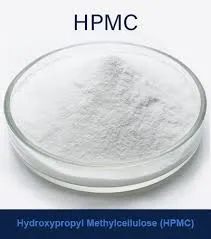
નવેમ્બર . 29, 2024 23:04 Back to list
Synthesis Methods and Applications of Hydroxyethyl Cellulose in Various Industries
Hydroxyethyl cellulose (HEC) is a water-soluble polymer derived from cellulose, which is abundant in nature. It has gained significant attention in various industries due to its excellent thickening, binding, and film-forming properties. The synthesis of hydroxyethyl cellulose involves a series of chemical modifications to cellulose, enabling it to dissolve in cold water and expand its range of applications.
The primary step in the synthesis of hydroxyethyl cellulose is the hydroxyethylation of cellulose. This process begins with the treatment of cellulose with an alkali solution, usually sodium hydroxide, to activate the hydroxyl groups present on the cellulose chain. This step expands the reactivity of the cellulose, allowing it to undergo further etherification.
Next, ethylene oxide is introduced into the reaction mixture. Ethylene oxide acts as an etherifying agent that reacts with the activated cellulose, substituting some of the hydroxyl groups with hydroxyethyl groups. The proportion of hydroxyethyl groups can be controlled by varying the amount of ethylene oxide used and the reaction conditions, such as temperature and time. Typically, the reaction is conducted in an aqueous medium under controlled temperatures to ensure maximum yield of HEC.
hydroxyethyl cellulose synthesis

The degree of substitution (DS) is a critical parameter in determining the properties of the synthesized HEC. A higher DS results in greater solubility and viscosity in aqueous solutions, making it an ideal thickener for various formulations. Consequently, HEC is widely utilized in industries such as pharmaceuticals, cosmetics, and food manufacturing. In pharmaceuticals, for instance, HEC is employed as a binder in tablet formulations and as a thickener in topical gels. In the cosmetic industry, it serves as a suspending agent in lotions and creams, enhancing texture and stability. In the food sector, HEC is valuable as a thickener and stabilizer in sauces and dressings.
Following synthesis, hydroxyethyl cellulose is often subjected to purification processes to remove unreacted materials and by-products
. Common methods include precipitation with alcohol and filtration, ensuring that the final product meets the required purity standards for applications.In conclusion, the synthesis of hydroxyethyl cellulose involves the hydroxyethylation of cellulose, primarily using ethylene oxide in an alkaline medium. This process not only transforms cellulose into a water-soluble polymer but also enhances its usability across various industries. The versatility and functionality of HEC make it an indispensable ingredient in many commercial products, and ongoing research continues to explore new applications and enhancements of its properties. As the demand for sustainable and effective materials rises, hydroxyethyl cellulose stands out as a promising solution in the realm of modern chemistry.
-
Versatile Hpmc Uses in Different Industries
NewsJun.19,2025
-
Redispersible Powder's Role in Enhancing Durability of Construction Products
NewsJun.19,2025
-
Hydroxyethyl Cellulose Applications Driving Green Industrial Processes
NewsJun.19,2025
-
Exploring Different Redispersible Polymer Powder
NewsJun.19,2025
-
Choosing the Right Mortar Bonding Agent
NewsJun.19,2025
-
Applications and Significance of China Hpmc in Modern Industries
NewsJun.19,2025







